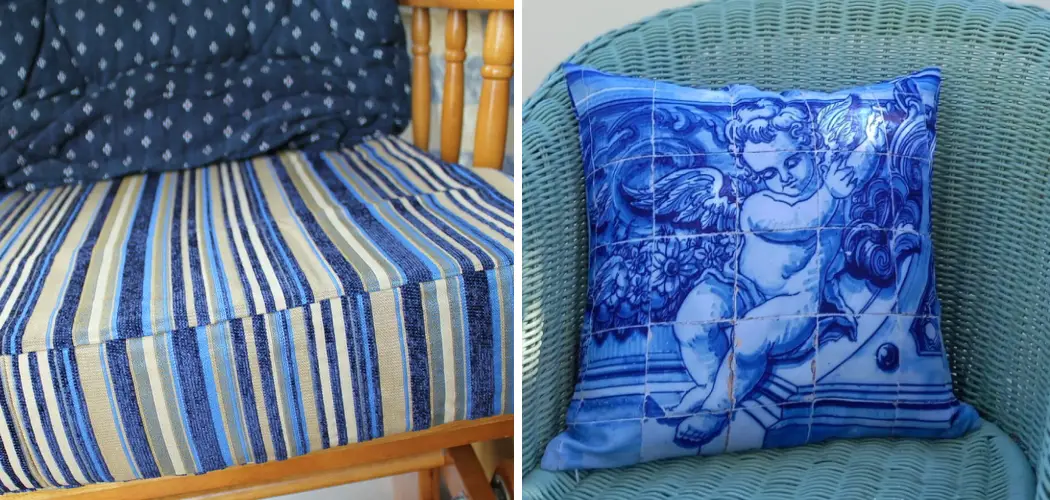Are you looking for a fun DIY project to spruce up your dining room chairs or patio furniture? Look no further than creating your own chair cushion covers! Making cushion covers yourself is an affordable and easy way to give your seating a fresh look without the added cost of replacing the entire chair or bench. In this step-by-step guide, we’ll walk you through everything you need to know how to make chair cushion covers.
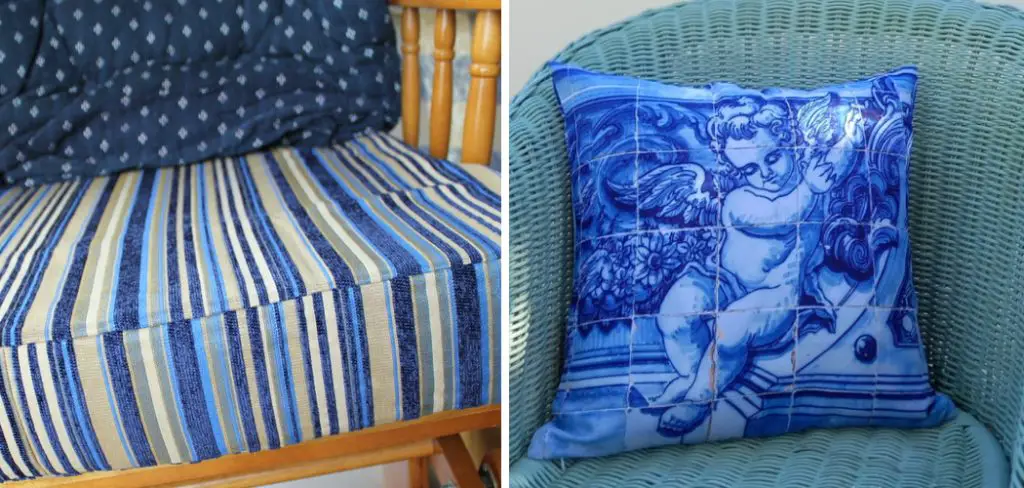
Can You Make Chair Cushion Covers?
Creating your own chair cushion covers can add your personal style to any room. With just a few materials, it is a fun and easy DIY project that you can complete in a weekend. Whether you want to add a pop of color or some pattern to your lackluster chairs, making your own covers is a fantastic solution.
All you need is fabric, scissors, a sewing machine or needle and thread, and of course, a bit of creativity. Not only does this craft allow you to customize the look of your chair cushions, but it’s also a great way to save money. So, why not give it a try and see the difference it can make in your home?
Why Should You Make Chair Cushion Covers?
Are you tired of spending money on expensive new chairs or uncomfortable dining room seats? Making chair cushion covers can be an affordable and creative solution that allows you to upgrade and customize your chairs. Not only can you choose the fabric and style of the covers, but you can also use this DIY project to update your home decor.
Whether you want a cheerful pop of color or a subdued pattern, making chair cushion covers is a fun and practical way to add a personal touch to your furniture while also saving some money. Try it out and see the difference it can make in your home!
How to Make Chair Cushion Covers: Your Complete Guide
Step 1: Gather Supplies
The first step is to gather the supplies you’ll need to make your cushion covers. You’ll need fabric, a sewing machine, thread, a ruler, and scissors. Your fabric choice is important. Choose a durable yet comfortable fabric, such as cotton or a cotton blend. Plain colors or patterns work great depending on the desired style and functional use.
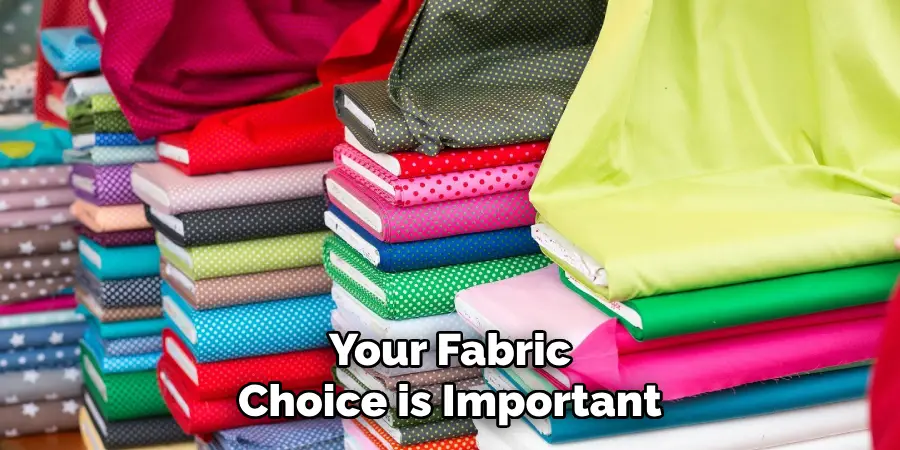
Step 2: Measure and Cut
The next step is measuring and cutting your fabric. Measure the width and length of your chair cushion and add an extra inch to each measurement for the seams. Then, cut the fabric to the correct size. If you are using a patterned fabric, be sure to align the pattern and your cuts to get the desired look for your covers.
Optional: You can also use cushion foam as your template and allow for an extra inch on all sides to measure and cut your fabric accurately.
Step 3: Sewing
Now, it’s time to sew the cushion covers. First, fold one of the shorter sides in half so that the wrong side of the fabric faces outwards. Use your sewing machine to stitch the seam to the new diagonal, making sure the edge of the fabric and seam is straight while sewing. Do the same with the opposite side and then turn the fabric inside out.
Step 4: Adding the Zipper
You can add a zipper to make it easy for you to remove and wash the cushion covers. Pin the zipper right sides facing to one of the unsewn short sides and sew it with a zipper foot. Then, align your fabric together and sew the remaining three sides. Make sure to leave a small opening in one of the corners for turning.
Step 5: Finishing Touches
Once you’ve sewn all four sides, turn your cushion cover right side out and insert the cushion foam. Close the remaining opening using hand stitching or your sewing machine. You can also add decorative touches like pom-poms or buttons at this stage if desired.
Step 6: Alternative Method – Making a Slipcover
If you want to create a slipcover for your cushion, follow the same steps as above, but instead of sewing all four sides together, leave one shorter side open. This will allow you to easily slide the cover on and off your chair cushion.

Step 7: Enjoy Your New Chair Cushion Covers
Now that you’ve completed all of the steps, you can sit back and relax on your new chair cushion covers. You can use these same steps to make covers for all of your chairs in different colors or patterns. Get creative and have fun with it! With proper care, your new cushion covers should last a long time. Remember to wash them regularly according to the fabric’s care instructions to keep them looking new.
Now you know how to make chair cushion covers and can impress your friends and family with your DIY skills! Happy sewing! So, gather your supplies, measure and cut, sew, add a zipper (optional), finish touches such as pom-poms or buttons (if desired), or follow an alternative slipcover method. Then, enjoy your new cushion covers!
5 Considerations Things When You Need to Make Chair Cushion Covers
1. Fabric choice
When making chair cushion covers, the fabric choice is first considered. Choosing a durable and easy-to-clean fabric that can withstand regular use is important. Some popular options for chair cushion covers include cotton, linen, and outdoor fabrics such as Sunbrella.
2. Measurements and pattern
Before cutting your fabric, it’s crucial to accurately measure your chair cushions. This will ensure that your covers fit properly and look neat on your chairs. You should also consider the pattern of your fabric and how it will align with the shape of your cushions. For example, stripes or plaids may require extra attention when cutting and sewing to ensure they line up correctly.
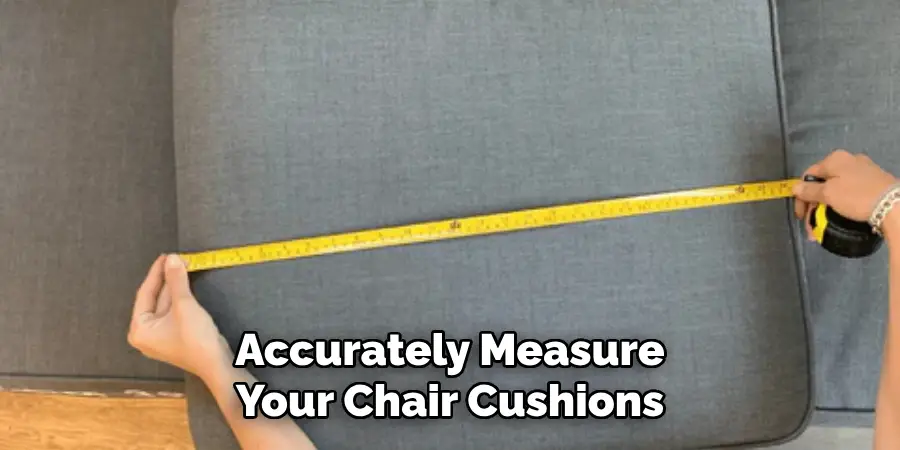
3. Closure type
When deciding on closure types for your chair cushion covers, several options exist. The most common closures include zippers, buttons, ties, or Velcro. Each has its own benefits and drawbacks, so it’s important to choose one that suits your skill level and desired aesthetic for the final product.
4. Cushion filling
Another consideration when making chair cushion covers is the type of filling you will use for the cushions themselves. Popular options include foam, polyester fiberfill, or down feathers. Each has its own pros and cons in terms of comfort and durability, so be sure to research which option will work best for your needs.
5. Maintenance and care
Finally, before completing your chair cushion covers, it’s important to consider their future maintenance and care. Consider if you want machine-washable covers or if spot cleaning will suffice. Also, think about any special care instructions for the specific fabric you have chosen to ensure that your covers last as long as possible.
Benefits of Making Chair Cushion Covers
Making chair cushion covers can be a fun and creative project offering practical benefits. By covering your chair cushions, you can easily update the look of your furniture without spending a lot of money on new pieces. Plus, you can choose from various fabrics and patterns to match your decor and personal style.
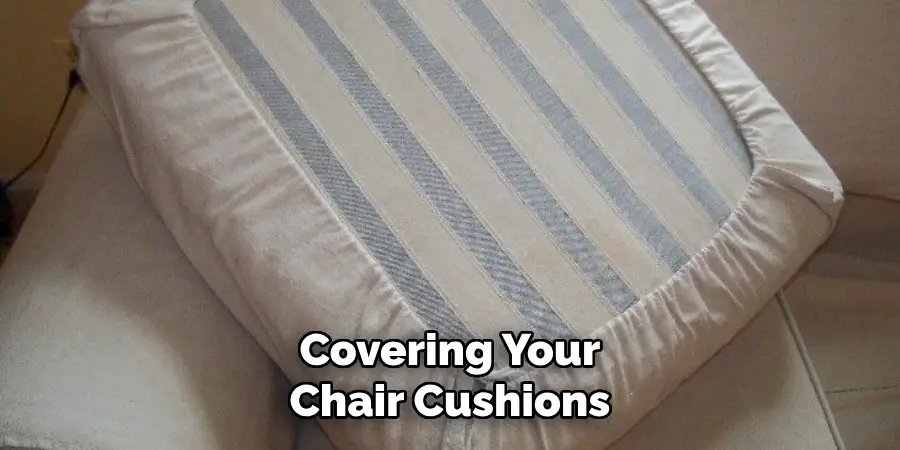
In addition to the aesthetic advantages, chair cushion covers can also protect your cushions from spills, stains, and wear and tear. They are also easy to clean and maintain, keeping your furniture looking fresh and new for longer. Whether you’re an experienced crafter or just starting out, making chair cushion covers can be a rewarding and worthwhile project.
4 Common Mistakes People Make When Trying to Make Chair Cushion Covers
1. Not Measuring Correctly
One of the most common mistakes people make when making chair cushion covers is not measuring correctly. It is important to measure the dimensions of your chair cushions accurately in order to ensure that your cover will fit properly. Taking shortcuts or guessing measurements can result in a cover that is either too loose or too tight, making it uncomfortable to sit on.
2. Choosing the Wrong Fabric
Another mistake is choosing the wrong fabric for their chair cushion covers. Selecting a durable and easy-to-clean fabric is important, especially if the cushions will be used frequently. Avoid fabrics that are prone to wrinkles or stains, as these can be difficult to maintain and keep looking new.
3. Not Securing the Cover Properly
Many people make the mistake of not securing their cushion covers properly, which can lead to them slipping off or becoming loose over time. This can be easily avoided by using ties or Velcro closures to secure the cover in place. Additionally, adding a zipper closure can make it easier to remove and wash the cover when needed.
4. Skipping Ironing or Pressing
Ironing or pressing your fabric before sewing may seem unnecessary, but it can make a big difference in the final appearance of your cushion cover. Skipping this step can result in a sloppy-looking cover with uneven seams and wrinkles. Taking the time to iron or press your fabric will ensure a professional-looking finish for your chair cushion covers.
Conclusion
Making your own cushion chair covers can brighten up any space in your home or patio. With just a few supplies and some time, you can create custom chair cushion covers that show off your personal style and aesthetic flair.
Using these steps, you can make custom covers for any size or shape of cushion you have. This DIY project is simple and fun, so get creative and enjoy making your new cushion covers! Thanks for reading our post about how to make chair cushion covers.
Expertise:
Crafting expert with a focus on innovative techniques and diverse materials.
Specialization:
- Textile arts (weaving, embroidery, and fabric dyeing)
- Woodworking and furniture design
- Mixed media and upcycling projects
Recognition:
- Featured in local art exhibits showcasing innovative craft projects
- Collaborated with community organizations to promote crafting workshops
- Received accolades for contributions to sustainable crafting initiatives
Mission:
- To inspire and empower crafters of all levels to discover their creative potential
- Encourages experimentation and self-expression through hands-on projects

